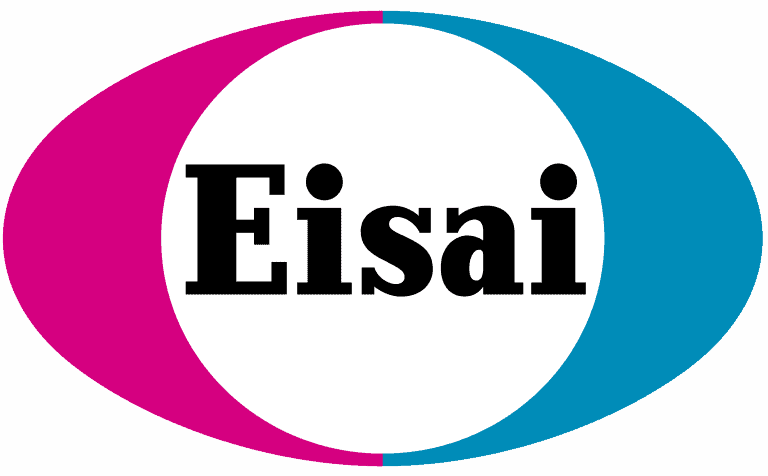Today’s blog will mostly focus on SUDEP, or Sudden Unexpected Death in EPilepsy. This topic is hard to talk about, but in the rare epilepsy community, these hard conversations represent realities we are faced with almost daily. Just last month we recognized June 15th as Dravet Remembrance Day as part of Awareness Month; a day reserved to reflect and hold close the memories of all those with Dravet syndrome that we have lost. I know for most of the community, remembering those we have lost extends far beyond just June 15th. Today I’m writing this blog as DSF’s Scientific Director, bringing you facts from what has been studied, but I am also writing it as a bereaved parent, who understands the uncertainty and pain that come along with complex medical diagnoses and discussion of loss. I have found through my own journey that it can be empowering to talk about the things I am most afraid of and to educate myself about what risks I can manage.
If you have lost a loved one with Dravet syndrome to SUDEP or another cause, DSF is here for you. Visit this page to learn more about bereavement resources and ways we continue to honor those we have lost.
What are the risks for premature death in Dravet syndrome?
For individuals with Dravet syndrome, the risk of premature death has been estimated as 15-20%, with half or more cases attributed to SUDEP. Other causes of premature death in Dravet syndrome include status epilepticus, seizure-related injuries, and drowning. While these are difficult statistics to share, there are some ways to help reduce risks and there is promising research that will hopefully lead to better future outcomes for patients and their families. The rest of the blog will focus in on SUDEP, since it is one of the greatest risk factors for patients with Dravet syndrome.
What is SUDEP?
SUDEP is not a cause of death, but rather a category. When a person with epilepsy passes away and their death cannot be attributed to another cause, such as injury or drowning, then it is categorized as SUDEP. SUDEP can be a particularly intimidating topic to discuss because there is still so much that is unknown about its cause. It frequently occurs after a seizure, often when the individual is alone and/or asleep. It is actually not known if there is a single cause of SUDEP or if the cause is different between individuals. Research has suggested that SUDEP involves disruptions to breathing, heart rhythm, and brain function.
Why are patients with Dravet syndrome at higher risk for SUDEP?
When looking at the population of individuals with epilepsy as a whole, the highest risk factors for SUDEP appear to be poor seizure control, generalized convulsive seizures (also called tonic-clonic or grand mal), nocturnal seizures (seizures while sleeping), and seizures that begin at a young age or that have persisted for many years of life. Patients with Dravet syndrome often experience several, or all, of these risk factors. Additionally, the majority of patients with Dravet syndrome carry a mutation in the SCN1A gene, which contains the code to make a specific kind of sodium channel. This sodium channel is particularly important in the brain, which explains why disruptions to SCN1A cause the seizures and other common symptoms of Dravet syndrome. However, in addition to being very important for brain function, this sodium channel is also used in the heart. The impacts of SCN1A mutations on the heart appear to be more subtle, and most patients with Dravet syndrome do not experience any major cardiac issues. However, researchers are interested to uncover more about how the heart is impacted in Dravet syndrome and to understand if small underlying disruptions might explain some of the increased risk of SUDEP when the heart is under more stress.
What can be done to reduce the risk of SUDEP?
There are no certain methods for preventing SUDEP, but there are recommendations based on the information that is known about risk factors.
- Work towards optimal seizure control. Since seizures are a major risk factor, working with the healthcare team on achieving the best seizure control with the fewest side effects is important. Optimal seizure control may look different for every patient with Dravet syndrome. Many families consider being seen at a DSF Comprehensive Care Center to be sure they are receiving the most current information on treatment options and care for individuals with Dravet syndrome. Ensure therapies are taken as prescribed and on time. If medications are not working, consider other options like the ketogenic diet or a vagus nerve stimulator (VNS) that may also help to manage seizures and lower SUDEP risk. Be aware of individual seizure triggers and communicate methods for reducing triggers with anyone involved in care.
- Consider a seizure detection device. Many cases of SUDEP occur after an unwitnessed seizure, and often while individuals are or have been asleep. The Danny Did Foundation is an incredible resource for information on available devices for seizure monitoring, and they also offer a grant program to help patient families with the cost of a device. DSF Patient Assistance Grants can help families in the Dravet community with the cost of seizure monitoring devices. You may also consider an anti-suffocation pillow like the Sleep-Safe Pillow.
- Create and share a Seizure Action Plan. Educate family members and other care providers, such as school or day program personnel, about the risks of SUDEP and the appropriate actions to take in a seizure emergency. A written Seizure Action Plan can be shared with these individuals with explicit instructions they can reference with steps to take when a seizure occurs. Set a reminder to update the plan at least yearly.
Beyond SUDEP, mitigating safety risks in Dravet syndrome in general is important for avoiding severe accidents. Seizures can pose a risk of injury, such as head trauma, choking, or drowning, necessitating constant supervision of individual with Dravet syndrome. Patients with Dravet syndrome may also have reduced awareness of danger and are frequently at risk for elopement. DSF has downloadable educational brochures that can be shared to explain topics around seizure safety and mortality and safety in educational settings.
What does emerging research say about SUDEP and Dravet syndrome?
SUDEP is incredibly difficult to study, and many cases are likely missed due to misinformation and lack of training. It is also can take a very long time to understand if a therapy is having any meaningful impact on reducing SUDEP. Despite these challenges, there are some promising findings that will hopefully lead to less patients being lost to SUDEP.
- Researchers working with mouse models of epilepsy have found that the serotonin pathway may be impacted in some cases of SUDEP. Interestingly, fenfluramine (FINTEPLA), which was approved for Dravet syndrome in 2020, works at least in part by targeting the serotonin pathway, and a 2021 study reported that patients on fenfluramine appear to have a lower rate of SUDEP than what has previously been reported. These studies are still early and will need further confirmation to know for sure if fenfluramine can really reduce the risk of SUDEP, but the data so far is promising.
- Some researchers emphasize considering the ketogenic diet. Seizures, and particularly generalized tonic clonic seizures, are a major risk factor for SUDEP, and the ketogenic diet has been highly effective at reducing this seizure type in children with epilepsy. The ketogenic diet has also reduced SUDEP in some mouse models of Dravet syndrome.
- In patients with medication-resistant epilepsy, VNS therapy may reduce the risk of SUDEP. While this has not been studied specifically in Dravet syndrome and more research is needed, VNS may be a therapy to discuss with your health care provider if medications are not working.
- Researchers are working hard to understand if there is a specific link between the heart and SUDEP in Dravet syndrome by developing novel animal models and analyzing patient data.
- The North American SUDEP Registry (NASR) seeks to help identify risk factors and mechanisms leading to sudden unexpected death in people with epilepsy (SUDEP). The registry collects DNA, brain tissue, and clinical data (e.g., medical records, EEG) for scientific studies about the causes of SUDEP. NASR collects information on cases of SUDEP regardless of how long ago the registrant may have passed away. Even though NASR may not be able to collect brain or DNA samples for older cases, tissue from older surgeries, MRIs, EEGs, and other clinical information have proven incredibly useful. You can learn more about this program here.
Research continues to give us hope of a future free from SUDEP. For now, we need to keep having these conversations, spreading awareness, working on reducing risks where possible, and participating and raising money for research efforts that focus on understanding and preventing SUDEP.
Information Sources:
CharlieFoundation.org
PreventingEpilepsyDeaths.org
PAMEonline.org
DannyDid.org






